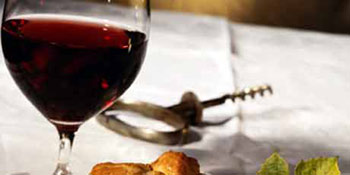

TASTING, PAIRING & STORING
 |
also visit our Recipe section! |
The art of tasting and appreciating wine doesn’t require vast years of experience. It merely requires a desire to better understand wine, a willingness to sample widely as your palate develops, being open to discovery and trusting your instincts.
There are a couple of basic tips that will make your wine tasting more enjoyable. White wine should be served chilled, but not cold. If it’s too cold, the flavours will be stifled. Red wine should be served at cellar, not room temperature (the ideal is between 13º and 18º Celsius).
If you’re serving a younger wine that’s not yet at its peak of maturity, decanting the wine will infuse it with oxygen thereby softening its tannins and bringing it into a better balance.
Conduct your wine tasting in comfortable surroundings, ideally with a group of friends and remember, it’s a subjective experience. There are no right answers. Fill each glass of wine about one-third full. Pick up each glass by the stem. If you hold the glass around the bowl, your hand will change the wine’s temperature and obscure your view of the contents of the glass.
The first step in wine tasting is to examine the wine and note its colour, intensity and clarity. Next, raise the glass to your nose and smell the wine. This is also called “nosing” the wine. You may want to do this twice. The first time, do it without swirling the glass. The second time through, swirl your glass letting the wine mix with oxygen. What aroma do you sense? Finally, taste the wine. This should be done slowly. Hold the wine in your mouth as you assess its characteristics, including body and fruit character. As you swallow the wine, notice how long the flavour stays with you. That’s the length of the wine.
In the end, drink what you like, not what you think you should like.
While there are no absolutes when it comes to pairing food and wine. We encourage experimentation and welcome new discoveries. Ultimately, wine and food pairing is a matter of personal taste. So, don’t be shy. Let your senses guide you and remember, as with wine tasting, there are no absolutes.
Click here to visit our Recipe section.
Canadian wine writer Tony Aspler says that if someone comes into your home and can see your wine, it’s not properly cellared. If we start from that premise, the optimum conditions for wine storage and development are: a constant temperature between 12º and 17º Celsius, humidity in the range of 60 - 80 per cent, and a dark quiet resting place. Table wines should be stored on their side.
The goal is to guard against the premature aging of wine that comes
from rapid temperature fluctuation, storage in too high a temperature
and exposure to too much light. Slower aging of wine allows it to develop
greater complexity. Wine should never be exposed to strong odors or
excessive vibration.
|